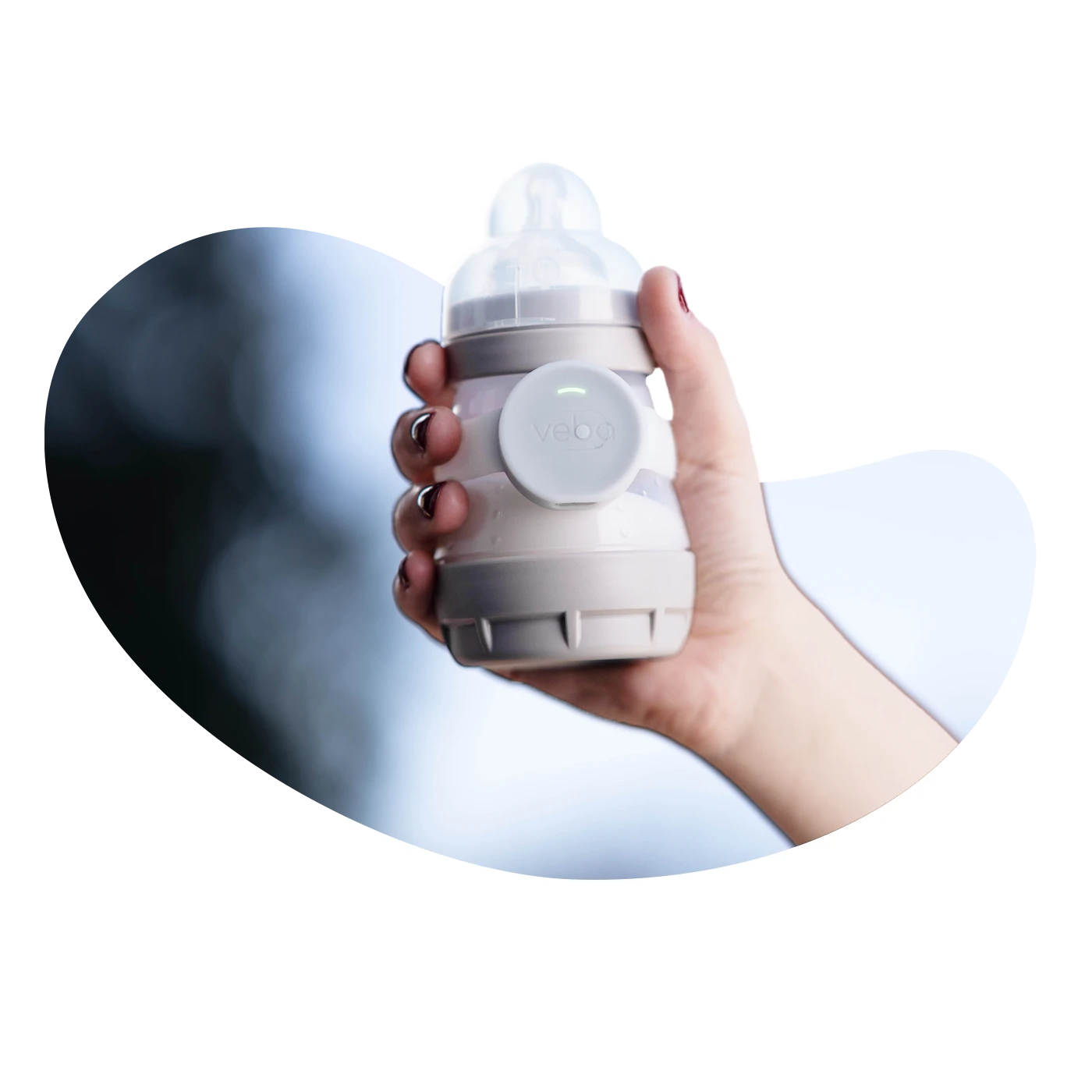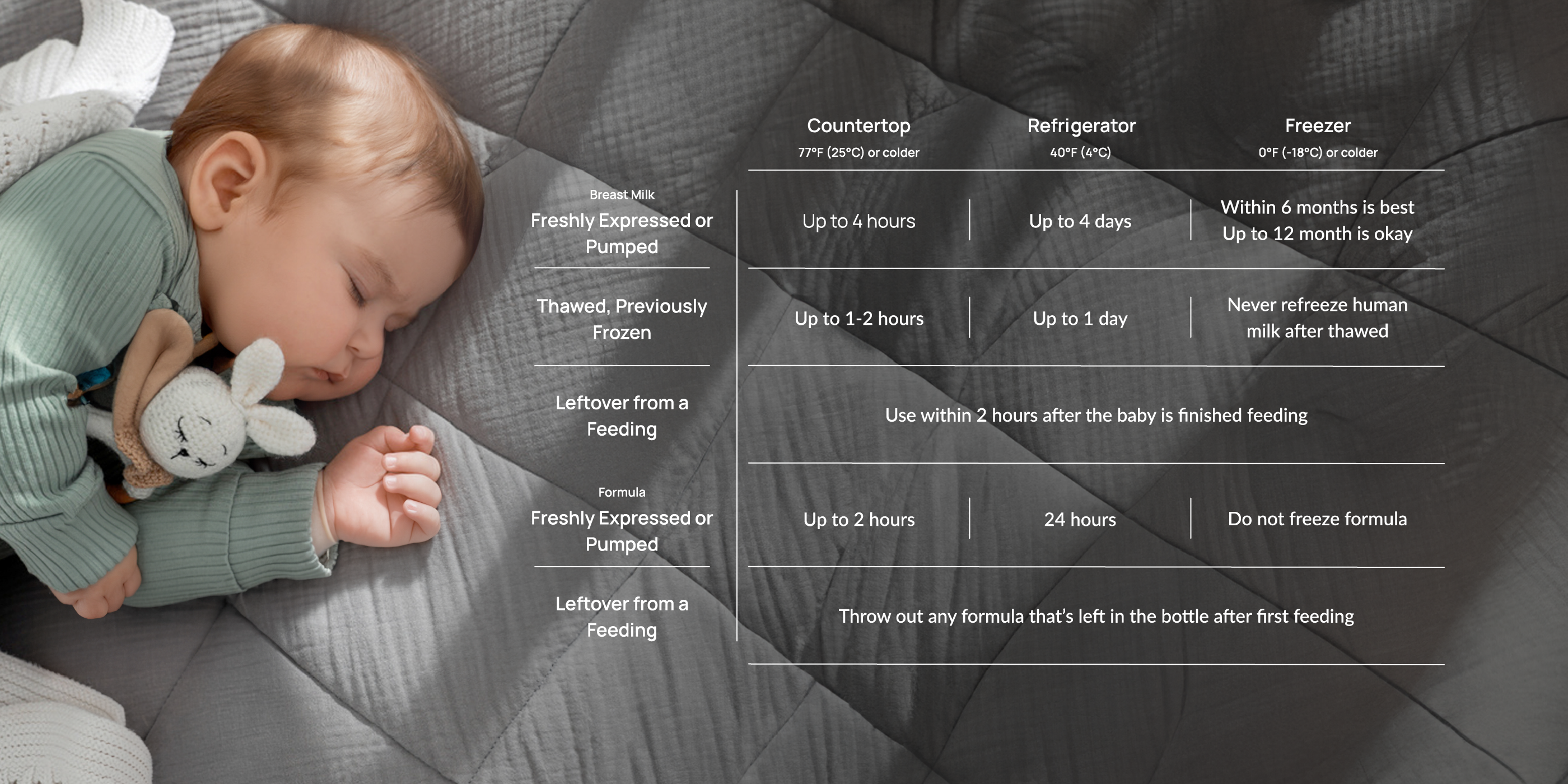
Facts About Freshness
Many people don't know how or when breast milk and formula expire… or how much it truly matters. The risks of feeding your baby spoiled or expired milk ranges from seriously uncomfortable to seriously dangerous! Here are a few of the risks…
- Low-quality nutrition
- Food poisoning
- Upset stomach
- Spitting up or vomiting
- Colic
- Fever
- Infection
Babies, especially infants, have very sensitive tummies and immune systems. That’s why at Veba we take freshness really, really seriously!
Formula & Breast Milk Storage Guidelines
All guidelines shown here, and tracked with the Veba, are in accordance with the best science we have available — the CDC and WHO guidelines for formula and breastmilk expiration.
Did you know?
Once your baby drinks from a bottle, saliva mixes with the milk. This causes accelerated bacterial growth which speeds up milk expiration!

Ready for More?
To learn in depth about breast milk and formula freshness, storage, and expiration, visit our blog, The Sip! Here are a few can’t-miss guides to get you started:
Breastmilk Storage Guidelines, According to the Experts The Veba Guide to Freshness
Never Cry Over Spoiled Milk — Again!
We know keeping track of everything milk expiration (on top of everything else you’ve got going on) can be totally overwhelming. But with Veba, you’ll never have to worry about freshness again! Peace of mind is just a shake away…

